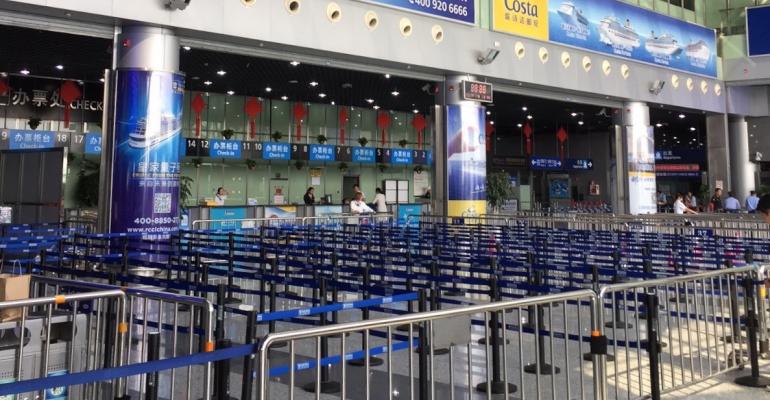Younong Wong, chairman of Seatrade event co-host and Asia's busiest cruise port, Shanghai Wusongkou International Cruise Terminal, said more than 98% of passengers using the port are Chinese.
'Given our ranking, we should also appeal to a wider market and have a higher proportion of international guests,' he argued.
The port handled 71 turnarounds in the first nine months of this year, when there were challenges with bottlenecks. 'In phase one of operation we did not have vessels over 100,000gt calling and did not anticipate the rapid entry of larger vessels and volumes,' Wang noted.
An expansion plan to enable the port to handle four large ships simultaneously, up from the current two, will be finished by the end of the year. Wusongkou also intends to introduce barcodes for clearance and streamline processes in conjunction with customs and other stakeholders.
Valeryii Nagornyi, CEO, Vladivostok Sea Terminal, said the facility offers a unique location as the nearest European port to North Asia. In 2017, 14 cruise calls are expected, up from six in 2016 and four in 2015.
The port has two berths of 235mtr and 255mtr and is able to accommodate two mega-ships simultaneously. There are also visa-free facilities, and immigration clearance is completed on board.
There are plans to upsize the port to accommodate larger and more ships, while the terminal building would be reconstructed to include more counters. Nagornyi said they hope to replicate a recent memorandum of understanding with Gang-won Maritime Tourism Centre with other tourism bodies in the region.
At one of the area's largest ports, Hong Kong, Jeff Bent, GM, Kai Tak Cruise Terminal, said the business has been diversifying by hosting activities such conferences, restaurants and banquets which helps keep the costs down for ships.
Concerning ports in Southeast Asia, Singapore's Marina Bay Cruise Centre should clock in 180 calls in the 2017/18 season, according to CEO Lionel Wong.
The facility can simultaneously accommodate ships up to 220,00gt and handle up to 6,800 passengers at a time, at a rate of 600 passengers every 15 minutes with its up to 110 check-in counters and 40 immigration counters. Berthing reservations can be made two years in advance.
Wong pointed out that Marina Bay Cruise Centre's efforts are complemented by what he called the world’s best airport and other world-class facilities thanks to a supportive government.
He reminded, though: 'This supportive ecosystem did not come about overnight.'
Wallop Pongluengdhama, GM, Phuket Deep Sea Port, said the government of Thailand strongly supports the cruise industry, which has grown 22% in the last three years.
The authorities understand the need to invest and have just begun developing a deep-sea port. It is located on the other side of the island from the famous tourist draw, Patong Beach, where most cruise ships currently deliver passengers by tender.
Berthing arrangements at the current multipurpose port will prioritize cruise vessels. The deep-sea port should be ready in early 2018 when the first of a four-phase development plan is completed. Pongluengdhama expects the facilities to support homeporting within three to four years.
Copyright © 2024. All rights reserved. Seatrade, a trading name of Informa Markets (UK) Limited. Add Seatrade Cruise News to your Google News feed.


